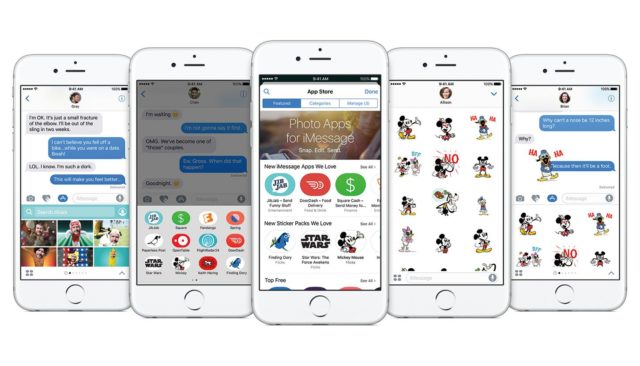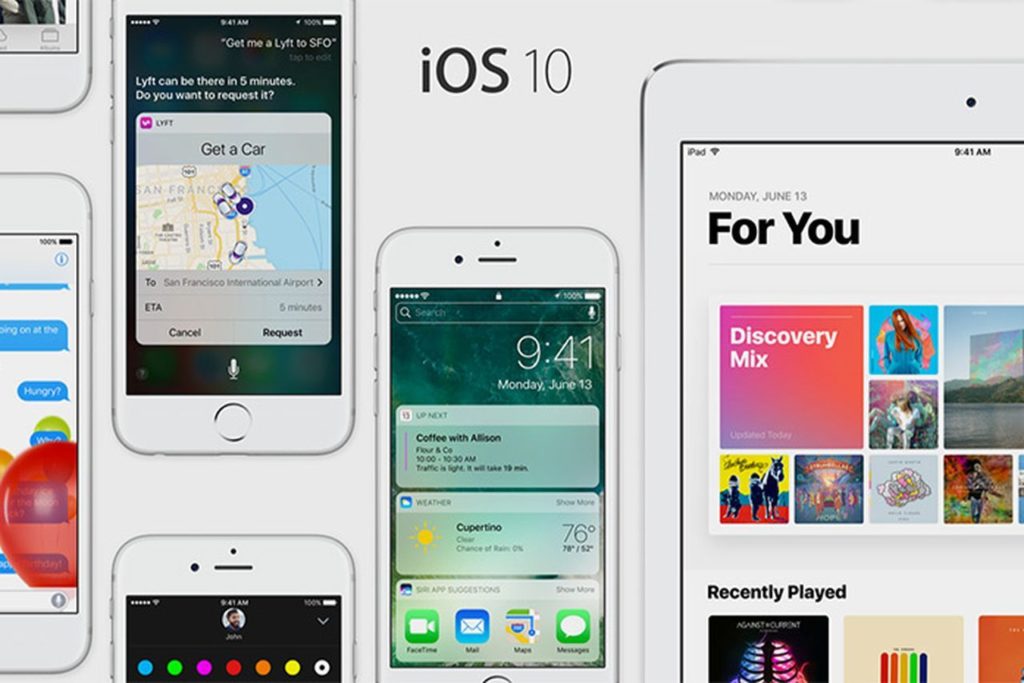Apple launched iOS 10 this month along with the new iPhone 7 models, and iOS 10 is arguably the more important of the two launches. If past experience is any guide, hundreds of millions of people will install iOS 10 on their Apple devices over the next few months. At best, the iPhone 7 will only sell perhaps 50 or 60 million between now and the end of the year. So iOS 10 will have a much greater impact on the market than the iPhone 7—and the impact of this new operating system on marketers will also be huge.
Overall, perhaps the most important change for iOS 10 is in the way that notifications will be front-and-center for users. When you pick up your device running iOS 10, you’ll see the notifications on the screen without having to unlock your device or even swipe. Notifications are therefore going to be far more apparent to users that ever before—and that’s a very important tool for marketing that just became many times more powerful.
Here are five reasons that iOS 10 is going to be a big boon to marketers.
Rich Push Notifications
Push notifications are a mainstay for mobile marketers, particularly for mobile games. There’s nothing like letting someone know their opponent is waiting for a move, when there’s a big sale going on, or when your virtual town has been sacked and burnt to the ground. Those notices that show up on your screen are a potent call to action. Now, iOS 10 is making them even better by adding rich push notifications and a whole array of features that marketers should be ecstatic to see.
Marketers will now be able to use rich media in push notifications, which means images, GIFs, audio or even video files can be added. These notifications will appear with a thumbnail preview, not just as a text list. Marketers will have an array of powerful choices to make—should you use a video or a GIF instead of text to make a notification? There will be plenty of experimenting ahead for marketers. It’s an area where no one has much data, and the audience for one game may be very different from the audience for another game in how they respond to rich media notifications. Experiment, get feedback and be careful not to offend with rich media—but track the performance carefully, and you may just find that rich media can substantially outperform plain old notifications. Seeing a town explode may motivate a player much more than simple text that says “your town was attacked!”
Siri, What Do You Think Of Marketing?
The answer, with iOS 10, should be that Siri is going to get to know a lot of marketers. Why? Because iOS 10 opens up Siri to developers with SiriKit, meaning you can build voice controls into your own apps. SiriKit will be available initially for six types of apps: Ride Booking, Photo Search, Payments, VoIP Calling and Workouts. Apple hasn’t said whether SiriKit will be expanded to other app types, but you can bet that’s going to be a much-requested feature. Will we ever see Siri in games? Someday, perhaps—and that has tremendous possibilities for game designers.
Meanwhile, it’s important to keep an eye on how Siri evolves and is being utilized by marketers for those apps allowed to work with SiriKit. That way you’ll be ready when Apple lets you into the fold. It seems likely that Siri will lead to plenty more business for those apps that take advantage of the interface. Marketers should be watching closely.
Messaging Gets Supercharged
After years of unchanging complacency, Apple’s iMessage is becoming a full-fledged platform in iOS 10. There’s a broad array of new features, from full-screen animations, to allowing you to draw, to being able to post handwritten notes, secret messages that are only revealed when you swipe, calendar scheduling and mobile payments . . . and an iMessage App Store. Developers can build applications right into iMessage, giving it third-party functionality like the best Asian messaging platforms and Facebook Messenger, too.
This means SMS marketing is going to be supercharged with iOS 10, and marketers should take full advantage of this—after all, it’s where mobile phone users spend an amazing amount of their time. If you are wondering whether this is a good idea, here’s a hint: Coca-Cola is going to be spending 70 percent of its mobile budget on SMS in the next fiscal year. They know a thing or two about marketing, and it sure seems like they see mobile messaging as a powerful tool.
Subscriptions
There’s a new monetization method coming with iOS 10—or, rather, an old monetization method that has never been built into iOS before: subscriptions. Apps can let you buy a subscription, with an interesting twist: Apple will take its normal 30 percent revenue share of the subscription price, but only for the first year. After that, Apple’s share is reduced to 15 percent. And subscriptions will now be available across all app categories—meaning subscription-based games are possible.
Yes, magazine publishers love this idea. It certainly makes sense—Apple seems to be figuring that their platform helps you acquire a subscriber initially, but if you hold onto them for a year that’s become your product’s power holding the subscriber, so you should get more of the revenue. This has the potential to become a serious revenue source for mobile games that can take advantage of it.
Game marketers and game designers will have to put their heads together to see if this makes sense for their game. Regular content updates would probably be expected under this scenario, so if your game isn’t capable of cranking out good content on a reliable schedule this probably isn’t a good idea.
Paid App Search
Apple will now be allowing paid app searches. Unlike Google AdWords, only one ad result will show at the top of the keyword searches in the App Store. However, this is going to be an enormously powerful way to showcase your app if you can find the right keywords. The first companies to leap into this will probably reap outsize benefits. Marketers should expect this to evolve quickly, and it’s anybody’s guess as to how paid app search in the Apple App Store will settle out in the long run. Marketers should be quick to try it out, though, and test how well it works before everyone piles in.

